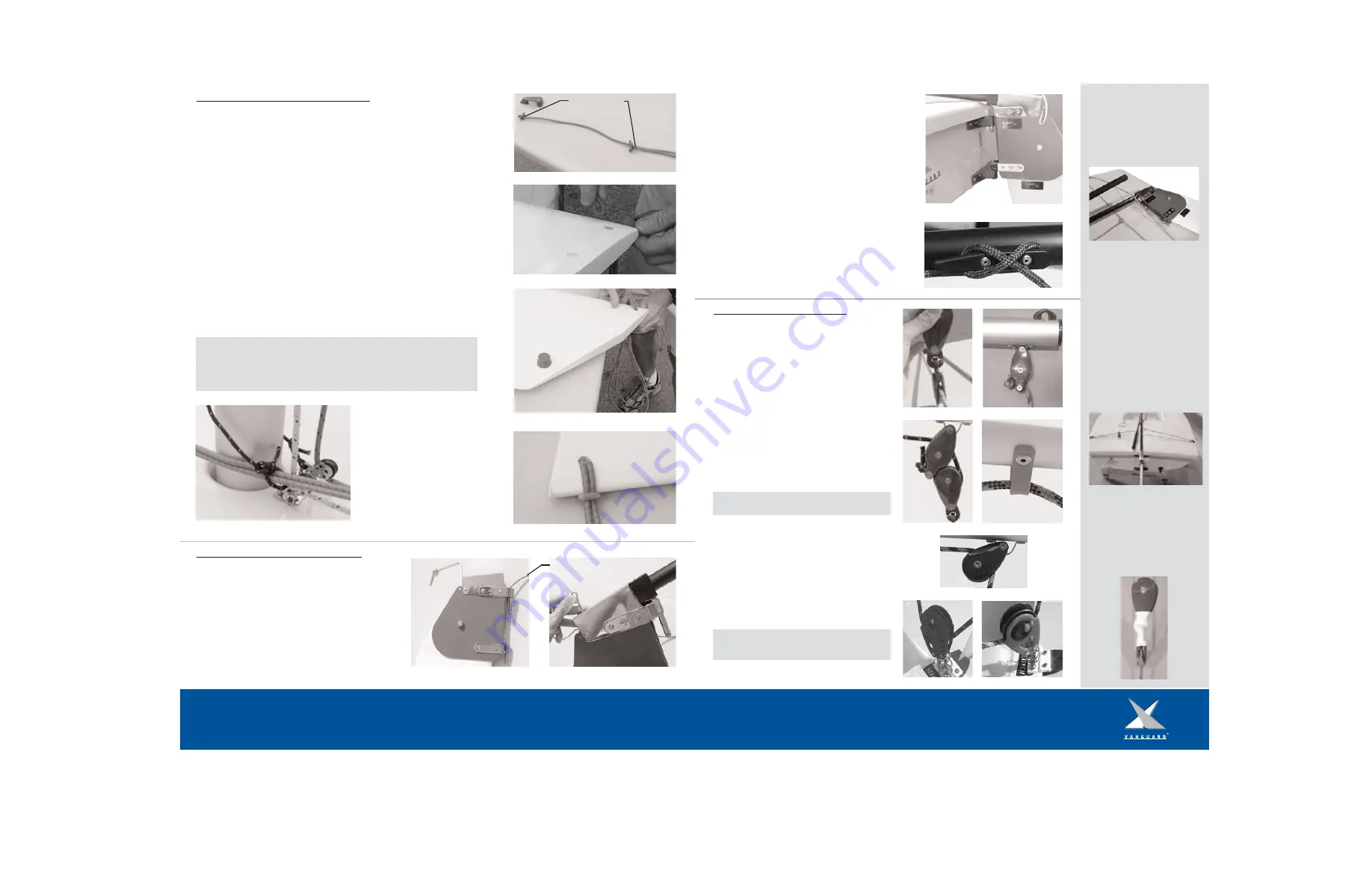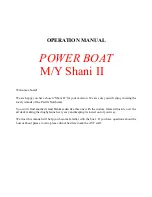
Laser Standard Block
Attaching the Rudder
When rigging the rudder it
is important to place the
tiller and extension
underneath the traveler
line.
Allow plenty of slack in
the traveler line before
sliding the entire tiller and
extension under only the
traveler line that is
connected between the
two fairleads. Slide the
rudder head back and
insert the pintles of the
rudderhead into place.
Tighten the traveler line
so that it is taught but
still allows the traveler
block to move freely
across the traveler,
clearing the tiller.
Taping the Traveler
Blocks
It is recommended that
you tape the traveler block
brummels so that they do
not become twisted or
disconnected.
1. Locate the mainsheet and large traveler block
from the delivery kit. At the stern of the boat
attach the large traveler block to the small traveler
block by joining the hooks (Figure 74).
2. Take the mainsheet through the becket of the
boom end block and tie a stopper knot
(Figure 75). Lead the line down through the large
traveler block and back through the boom end
block (Figure 76).
3. Continue the line forward through the boom
bail (Figure 77), through the forward boom block
(Figure 78) and down to the ratchet block. Lead
the line through the ratchet block making sure you
hear a ratcheting noise when trimming in the sail.
Tie a stopper knot in the tail end of the line.
Mainsheet, Standard and Pro Models:
Daggerboard Retainer, Standard and Pro Models:
1. Retrieve the daggerboard retainer shockcord from the delivery kit line bag.
On the ends of the shockcord there will be two brummel hooks (Figure 69).
2. Take one end of the daggerboard retainer and fold it a third of the way down
the total length of the line (Figure 69).
3. At the fold in the line, insert the two pieces of shockcord through the hole
in the top of the daggerboard (Figure 70 & 71).
4. Take the free ends of the shockcord and put them through the shockcord loop.
Pull until tight around the edge of the board (Figure 72).
5. When you are ready to launch, place the daggerboard in the trunk with the
shockcord facing towards the bow. Take one end of the daggerboard retaining
line around the starboard side of the mast and through the bow handle. Take
the other end of the line around the port side and connect the two brummel
hooks.
Figure 69
Figure 70
Figure 71
Figure 72
Tip: For the Laser Pro model versions it is recommended that you lead both ends
of the daggerboard retainer to one side of the mast and hook the brummels
around the bow handle. To keep the daggerboard retainer out of the way of the
other lines on the deck it is suggested to tie the mast tie in around the
daggerboard retainer (Figure 73).
4. Slide the tiller with extension under the
traveler line. Align the pintles over the gudgeons
and press down to secure (Figure 81). To release
press on the rudder lift stop and lift the rudder
head straight up.
5. The rudder downhaul line locks the rudder in the
down position. Before launching be sure that the
line is loose so that the rudder can remain in the
upright position. When you are ready to sail, pull
on the rudder downhaul and the rudder blade will
lower into the water. Tie off the line to the cleat
on the tiller while sailing (Figure 82).
Rigging the Rudder, Standard and Pro Models:
Brummel Hooks
Note: Mainsheet block will differ in appearance
depending on whether you have a Laser Standard
Model or Laser Pro Model.
Figure 74
Figure 75
Figure 76
Figure 77
Figure 78
Laser Pro Block
Figure 73
Figure 79
Figure 80
Figure 81
Figure 82
Note: The use of a stopper knot here is so that
maximum mainsheet tension may be achieved.
1. Locate the tiller with extension and rudder from the
delivery kit.
2. Take the tiller with extension and slide the tiller into
the head of the rudder. Make sure that the rudder down-
haul line is threaded up through the pintles (Figure 79).
3. Align the hole in the top of the tiller with that in the
rudder head and insert the rudder retaining pin to secure
(Figure 80). It is suggested to tape over the retaining pin
to prevent the mainsheet from catching on it.
Rudder Downhaul Line




























